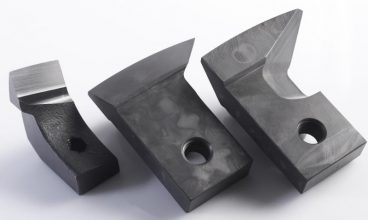The Importance of Proper Regenerative Thermal Oxidizers Maintenance
If you are looking for a way to effectively treat your industrial waste gases, you may want to consider regenerative thermal oxidizers (RTO). RTOs are a type of thermal oxidizer that can achieve high destruction efficiencies while using a minimal amount of energy. We will discuss what an RTO is, how it works, and some of the benefits that it can provide.
What is a regenerative thermal oxidizer?
Regenerative thermal oxidizers (RTO) are a type of thermal oxidizers using a heat exchanger to preheat the incoming process gas before it is combusted. This makes the RTO more efficient than a direct-fired thermal oxidizer. RTOs are used to destroy harmful contaminants in process gases from industrial processes. The contaminated gas is first passed through a heat exchanger, where it is preheated by the hot exhaust gas from the combustion chamber. The preheated gas then enters the combustion chamber, where it is combusted at high temperatures. The resulting hot exhaust gas is passed through the heat exchanger again, where it transfers its heat to the incoming gas.

How do regenerative thermal oxidizers work?
Regenerative thermal oxidizers (RTO) are a type of thermal oxidizer used to control emissions from industrial processes. RTOs use a bed of ceramic, metal, or other heat-resistant materials to heat the contaminated air to the oxidation temperature. The contaminated air is then passed through the bed, where the heat is transferred to the air, causing the contaminants to be oxidized. The heat from the oxidation reaction is then used to heat the next batch of contaminated air, allowing the RTO to operate at a high efficiency.
What are the drawbacks of using a regenerative thermal oxidizer?
There are several drawbacks to using a regenerative thermal oxidizer or RTO. One is the potential for the RTO to overheat and break down organic compounds into their component parts, including carbon dioxide and water. This can create new environmental problems and potentially harm the equipment. Additionally, RTOs require a significant amount of energy to operate, which can add to the cost of running the process. Finally, RTOs can produce large volumes of waste heat, which must be properly managed to avoid damaging the equipment or causing other safety hazards.
How can I choose the right regenerative thermal oxidizer for my needs?
When choosing a regenerative thermal oxidizers (RTO), it is important to consider the specific needs of your application and industry. There are a number of factors to consider, such as the type of waste gas being treated, the volume of gas to be treated, the desired destruction efficiency, and the operating conditions of the RTO.
The type of waste gas being treated is the most important factor to consider when choosing an RTO. Different RTOs are designed for different types of waste gas. For example, some RTOs are designed for waste gas with a high concentration of organic compounds, while others are designed for waste gas with a high concentration of inorganic compounds.
The volume of gas to be treated is also an important factor to consider. RTOs come in a variety of sizes, from small units that can treat a few hundred cubic feet of gas per minute to large units that can treat several thousand cubic feet of gas per minute.
The desired destruction efficiency is another important factor to consider. RTOs can achieve destruction efficiencies of 99% or higher. However, the actual destruction efficiency will vary depending on the specific waste gas being treated.
The operating conditions of the RTO are also an important factor to consider. RTOs are designed to operate under a variety of conditions, including high temperatures and pressures.
When choosing an RTO, it is important to work with a reputable supplier who can help you select the right RTO for your specific needs.
How do I properly maintain my regenerative thermal oxidizer?

Your regenerative thermal oxidizers should be regularly inspected and maintained to ensure its proper functioning. The following are some tips on how to properly maintain your regenerative thermal oxidizer:
1. Inspect the unit regularly and clean it as needed.
2. Check the filters and replace them as needed.
3. Inspect the heat exchanger and clean it as needed.
4. Check the thermal oxidizer burner and clean it as needed.
5. Inspect the exhaust stack and clean it as needed.
6. Regularly check the pressure gauge and make sure it is functioning properly.
7. Regularly check the temperature gauge and make sure it is functioning properly.
8. Regularly check the flow rate meter and make sure it is functioning properly.
9. Make sure the unit is properly grounded.
10. Follow the manufacturer’s instructions for proper operation and maintenance of the unit.
What are some common problems that can occur with regenerative thermal oxidizers?
There are a few common problems that can occur with regenerative thermal oxidizers. The most common problem is the fouling of the heat exchanger surfaces. This can happen when the VOCs being destroyed contain high levels of particulates or when the RTOs are not operated within their design specifications. Other common problems include:
-Damaged or worn out burner
-Leaking seals
-Corrosion
If not properly maintained, these problems can lead to decreased performance of the RTOs and increased emissions.


